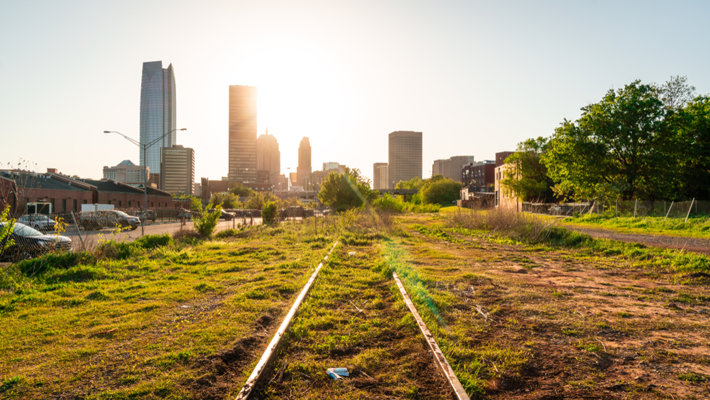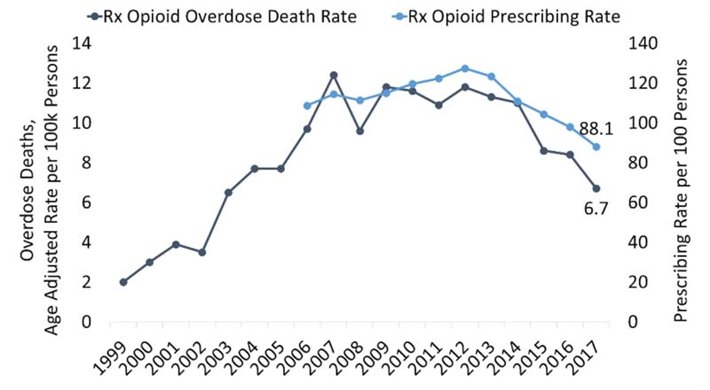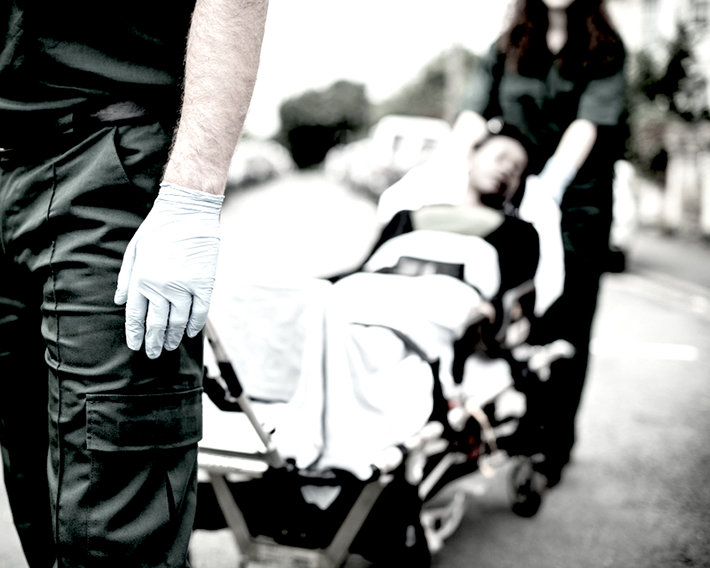Halting the Runaway Train That is Our Opioid Crisis: Can We Do it?

It may seem like an impossible task to halt the runaway train of our opioid crisis. But Oklahoma has prepared a plan to do just that which can serve as a model for other states and let us estimate the price tag to eliminate this catastrophe.
There’s hardly an American alive today who doesn’t know that we’re being hit hard by an opioid crisis. Millions of families have suffered as a result of a loved one’s opioid addiction, and hundreds of thousands have lost someone to an overdose death. The character of this crisis is a lot like a runaway train.
Every minute, it seems to be running faster. There doesn’t seem to be anyone in charge of the train. The tracks are wide open and smooth. No one’s hanging on the brake handle, trying to stop the train. The hundreds of passengers on this train are threatened with injury or death if this train hits a curve and derails.
At the same time, some people are running alongside the train, raising a vigorous alarm. For the last five years, especially, loud voices have been calling attention to this runaway train and begging for legislation, enforcement and funding to build some kind of barrier that would stop this train without harming its passengers.
Will all this effort be for nothing? Or is it possible to actually bring this train to a stop and save the passengers?
Just like with a runaway train, it can be stopped. But it’s not going to be easy, tidy or cheap. Let’s look at one State’s plan to stop those deadly wheels from turning.
Oklahoma’s Plan to Stop The Train
In 2012, Oklahoma was in the unenviable position of having the worst prescription drug problem in the country. That was the year that doctors in the State wrote 127 painkiller prescriptions for every 100 people in the State. As the prescribing rate grew, so did the number of fatal prescription opioid overdoses. You can see this comparison here.

The State has worked hard to reduce the number of Oklahomans lost to opioids. You can see in the chart above that the number of prescriptions written fell to 88 per 100 residents. Overdose deaths dropped to a rate significantly below the national average of 14.6 per 100,000 population.
State officials haven’t stopped there. The State’s Attorney General sued three opioid manufacturers for their fraudulent marketing practices that enabled them to massively increase the number of painkillers being prescribed. In 2019, the three pharmaceutical companies either agreed to settle these suits or were found culpable for the State’s accusations. The total settlement/judgment amount approaches $1 billion.
As part of this legal action, the State commissioned the writing of a comprehensive abatement plan that would reverse the pernicious effects of the millions of pills poured into pharmacies in cities and small towns across Oklahoma. According to the state of Oklahoma, in 2015 alone, 326 million opioid pills were dispensed, enough for every adult Oklahoman to receive 110 pills.
This plan encompassed every logical corner of society that can be improved with public funds and so provides a look at how this scourge could possibly be remedied across the country. There is no way, of course, to compensate Oklahoma families for their suffering and loss. But patching the holes that could prevent the loss of more Americans might be the best we can do.
Let’s look at the general outlines of their plan. Be forewarned, it’s a little overwhelming. These steps point out the areas that need bolstering or establishment to stop Oklahoma’s runaway train.

Controlling the Supply
- Set up a fully electronic prescription system
- Protect those who request help for a person who is overdosing with a Good Samaritan Law
- Legislate restrictions on the number of opioids handed out to limit the ability of patients to abuse these drugs
- Improve the Prescription Monitoring Program to enable the Oklahoma Board of Narcotics to be alerted to dangerously high dosages, hazardous combinations of drugs and doctor-shopping
- Increase availability of naloxone, the opioid antidote, ensuring all first responders have it and know how to use it
- Establish better drug disposal systems for patients and in pharmacies to reduce the number of pills in circulation
- Improve medication security in nursing homes and long-care facilities
- Increase continuing education requirements for every prescriber in the State so they are better trained on prescribing opioids and recognizing addiction and diversion of drugs to the illicit market
- Institute addiction training in every residency program and for every physician, nurse, dentist and physician assistant
Improving Recovery
- Increase the availability of inpatient and outpatient treatment for addiction
- Expand drug courts so more non-violent offenders charged with drug possession may be diverted from regular courts and prison sentences
- Provide more detoxification facilities for people in withdrawal
- Build more halfway and recovery housing to provide better post-rehab support
- Provide transportation for those in recovery who have no other way to get to treatment
- Improve screening and treatment of newborns suffering from neonatal abstinence syndrome

Preventing Drug Use
- Institute drug prevention curricula in every grade from kindergarten through 12th grade
- Institute college drug prevention programs
- Train middle school and high school athletes and coaches on the increased risk among athletes for addiction to opioid painkillers that may be prescribed after a sports injury
- Support and help finance community and school drug prevention programs
- Improve the availability of alternatives to opioid treatment for pain, such as chiropractic, acupuncture, physical therapy
- Improve reporting and evaluation procedures to track trends in prescribing, addiction and recovery
This is not all of the steps, but it gives you a good overview of what it’s going to take to restore Oklahoma’s health. It’s going to take making it much harder for those who want to abuse the drugs to get them, more access to recovery for those who are already addicted, and preventing other Oklahomans from ever starting to use them.
The Price Tag
The cost of this plan is staggering. Over the 30 years, it’s estimated will be required to wipe this problem out, this plan will cost $17 billion. The first year is estimated to cost $870 million.
And thus, the State’s Attorney General sued Purdue Pharma, Teva Pharmaceuticals and Johnson & Johnson and their subsidiary Janssen Pharmaceuticals, tasking these companies with financing this recovery. As mentioned, the State has received settlements or judgments totaling nearly a billion dollars so far.
Of course, Oklahoma is not the only state with a problem. In terms of overdose deaths resulting from the use of any drug, the problems in West Virginia, Pennsylvania, Ohio, the District of Columbia and Kentucky are worse. Repeat this plan in every state—some much more populous like Pennsylvania—and the price tag goes up into the hundreds of billions. The price tag to return health to our country and reduce the threat to our lives and our happiness. It is an investment well worth making if the funds can be found.


 ®
®